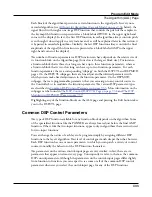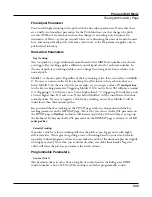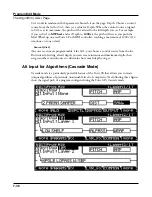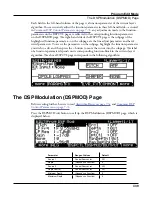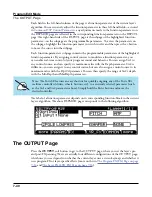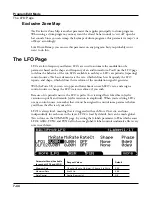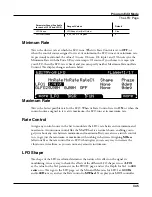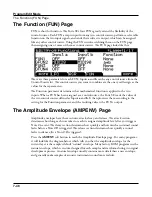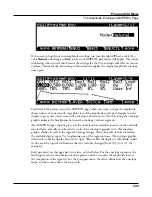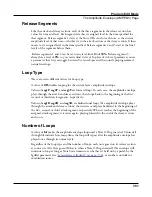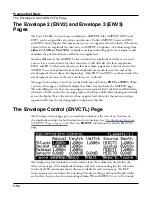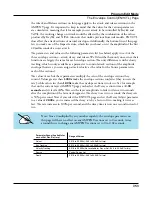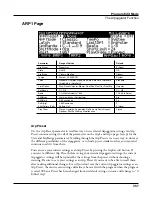
Program Edit Mode
The LFO Page
7-44
Exclusive Zone Map
The Exclusive Zone Map is another parameter that applies principally to drum programs.
When using a drum program, you may want the closed hi-hat sounds to “cut off” open hi-
hat sounds. Since you can remap the keymaps of drum programs, this parameter remaps “cut
off keys” accordingly.
Like Drum Remap, you can use this parameter on any program, but you probably won’t
want to do this.
The LFO Page
LFOs are low-frequency oscillators. LFOs are used to automate the modulation of a
parameter based on the shape and frequency of an audio waveform. You’ll use the LFO page
to define the behavior of the two LFOs available to each layer. LFOs are periodic (repeating)
control sources. The basic elements are the rate, which defines how frequently the LFO
repeats, and shape, which defines the waveform of the modulation signal it generates.
With the Forte SE, you can set upper and lower limits on each LFO’s rate, and assign a
control source to change the LFO’s rate in realtime, if you wish.
Because of its periodic nature, the LFO is perfect for creating effects like vibrato (cyclic
variation in pitch) and tremolo (cyclic variation in amplitude). When you’re editing LFOs,
or any control source, remember that it must be assigned to control some parameter before
you’ll hear the effects of your edits.
LFO1 is always local, meaning that it’s triggered with each Note On event, and runs
independently for each note in the layer. LFO2 is local by default, but can be made global.
This is done on the COMMON page, by setting the Globals parameter to On, which causes
LFO2, ASR2, FUN2 and FUN4 all to become global. Global controls uniformly affect every
note in each layer.
Parameter Group (Available
for each of LFO1 and LFO2)
Range of Values
Default
Minimum Rate
1/4 note, 1/8 note, 1/8 triplet, 1/16 note, 0 to 24 Hz
0.00
Maximum Rate
0 to 24 Hz
0.00
Rate Control
Control Source List
Off




